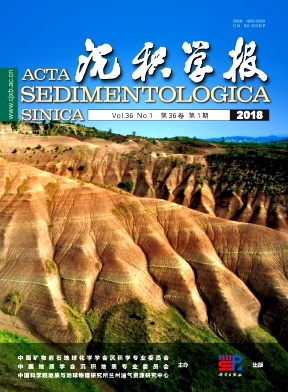Eocene Pinghu Formation-Oligocene Huagang Formation Sequence Stratigraphy and Depositional Model of Xihu Sag in East China Sea Basin
doi: 10.3969/j.issn.1000-0550.2018.015
- Received Date: 2016-04-26
- Rev Recd Date: 2017-01-03
- Publish Date: 2018-02-10
-
Key words:
- East China Sea /
- Xihu Sag /
- Pinghu Formation /
- Huagang Formation /
- sequence stratigraphy /
- depositional model
Abstract: East China Sea basin is located in the eastern edge of the Eurasian plate, which is the margin rift basin by the strike-slip pulling of residual Diaoyu Island arc. Xihu Sag is the largest of all the tectonic units in the study area. Yuquan movement of late Eocene corresponded to Eocene-Oligocene Oi-1 quench event that caused about 70 m dropping of sea level, and Huagang movement of late Oligocene corresponds to the Paleogene-Neogene global Mi-1 cooling event that caused about 50 m dropping of sea level. All of these have a significant impact for tectonic-sedimentary evolution of Pinghu-Huagang Formation. Cenozoic the seven global sea level significant drops because of global climate changes corresponding to seven "tectonics" in East China Sea basin. Therefore, seven second sequences can be recognized. Pinghu-Huagang Formations can be divided into two second sequences (SSQ3-SSQ4) and six third sequences (SQ1-SQ6) in Xihu sag. LST that is located in the slope zone of the east Xihu secondary sag is composed of sublacustrine fan, slope fan and lowstand wedge. In the western gentle slope zone TST is composed of predelta-shelf (or deep lake) mud that sourced from Haijiao-Yushan uplift, and in the eastern steep slope zone TST is composed of fan delta or nearshore subaqueous fan delta gravel-shelf (or deep lake) mud that sourced from Diaoyu uplift. In the western gentle slope zone HST is composed of delta plain gravel-delta front sand-prodelta and shelf (or lake) mud that sourced from Haijiao-Yushan uplift, and in eastern steep slope zone HST is composed of fan delta or nearshore subaqueous fan delta sand and gravel-shelf (or deep lake) mud that sourced from Diaoyu uplift zone. Tectonics, paleoclimate, sea-level and source are the main controlling factors for the third sequence and system tracts.
| Citation: | ZHOU RuiQi, FU Heng, XU GuoSheng, MIAO Qing, FU ZhenQun. Eocene Pinghu Formation-Oligocene Huagang Formation Sequence Stratigraphy and Depositional Model of Xihu Sag in East China Sea Basin[J]. Acta Sedimentologica Sinica, 2018, 36(1): 132-141. doi: 10.3969/j.issn.1000-0550.2018.015 |






 DownLoad:
DownLoad: